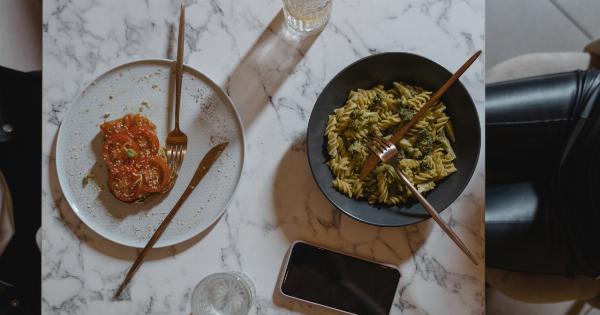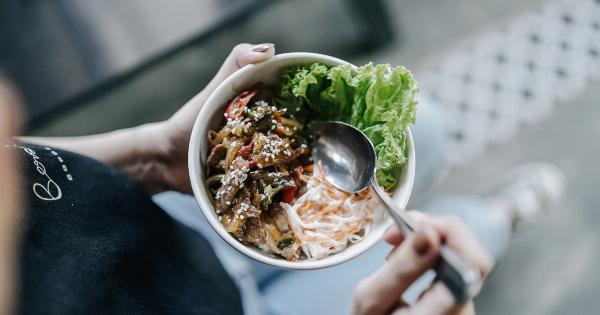The invention of the microwave has been a great convenience for many people. It has made cooking and reheating food much easier and faster. Unfortunately, there are some foods that should never be put in a microwave.
Here is a list of 30 foods to avoid microwaving:.
1. Eggs
When eggs are microwaved, they have a tendency to explode. This can be dangerous and messy. Instead, it’s best to cook eggs on the stovetop or in the oven.
2. Frozen meats
If you’re in a hurry, it can be tempting to throw a frozen steak or chicken breast in the microwave. However, this can result in uneven cooking and a tough texture. It’s best to thaw frozen meats before cooking them.
3. Fried food
If you put fried food in the microwave, it will become soggy and lose its crispiness. Instead, it’s best to reheat fried food in a toaster oven or on the stovetop.
4. Grapes
When grapes are microwaved, they can create sparks and start a fire. It’s best to avoid microwaving grapes altogether.
5. Hot peppers
When hot peppers are microwaved, they release capsaicin into the air. This can cause eye irritation and breathing difficulties. It’s best to avoid microwaving hot peppers.
6. Leafy greens
If you microwave leafy greens, they will become wilted and slimy. It’s best to sauté or steam these types of vegetables.
7. Breast milk
If you’re trying to warm up breast milk, it’s important to avoid microwaving it. Microwaving can destroy important nutrients and create hot spots that can burn your baby’s mouth.
It’s best to use a bottle warmer or warm water instead.
8. Bread
If you microwaved bread, it will become rubbery and tough. It’s best to reheat bread in the oven or on a stovetop.
9. Canned foods
When canned foods are microwaved, they can create a dangerous buildup of pressure. It’s best to transfer canned foods to a microwave-safe container before heating them up.
10. Chinese takeout containers
Many Chinese takeout containers are not microwave-safe. They may be coated in chemicals that can leach into your food when heated. It’s best to transfer your food to a microwave-safe container before heating it up.
11. Styrofoam
Styrofoam is often used for takeout containers and cups. However, it’s not microwave-safe. Microwaving Styrofoam can release harmful chemicals into your food. It’s best to transfer your food to a microwave-safe container before heating it up.
12. Gravy
When you microwave gravy, it can become lumpy and separated. It’s best to heat it up on a stovetop.
13. Nuts
When you microwave nuts, they can become overheated and catch fire. It’s best to roast nuts in the oven or on the stovetop.
14. Pasta
When you microwave pasta, it can become mushy and overcooked. It’s best to reheat pasta on the stovetop or in the oven.
15. Plastic containers
Many plastic containers are not microwave-safe. When heated, they can melt and release harmful chemicals into your food. It’s best to transfer your food to a glass or ceramic container before heating it up.
16. Potatoes
If you microwave a potato without piercing it, it can explode and make a mess. It’s best to pierce the potato several times with a fork before microwaving it.
17. Red sauce
When you microwave red sauce, it can become splattery and create a mess. It’s best to heat it up on a stovetop.
18. Rice
When you microwave rice, it can become dried out and crunchy. It’s best to reheat rice on the stovetop or in the oven.
19. Seafood
When you microwave seafood, it can create an unpleasant odor and rubbery texture. It’s best to reheat seafood on the stovetop or in the oven.
20. Spaghetti squash
If you microwave spaghetti squash, it can become tough and flavorless. It’s best to roast it in the oven.
21. Travel mugs
Many travel mugs are not microwave-safe. They may have metal components that can spark or cause a fire. It’s best to transfer your coffee or tea to a microwave-safe container before heating it up.
22. Yogurt
When you microwave yogurt, it can curdle and separate. It’s best to eat it at room temperature or chilled.
23. Food in sealed containers
If you microwave food in a sealed container, it can explode and cause a mess. It’s best to transfer your food to an open container before heating it up.
24. Tuna
When you microwave tuna, it can become dry and tough. It’s best to reheat tuna on the stovetop or in the oven.
25. Tomatoes
When you microwave tomatoes, they can lose their flavor and become mushy. It’s best to use fresh tomatoes whenever possible.
26. Whole chicken
When you microwave a whole chicken, it can become unevenly cooked and have a rubbery texture. It’s best to cook chicken in the oven or on a stovetop.
27. Whole garlic
If you microwaved a whole garlic, it can explode and make a mess. It’s best to roast garlic in the oven.
28. Wine
When you microwave wine, it can create a dangerous buildup of pressure. It’s best to warm up wine on the stovetop or in a slow cooker.
29. Wooden spoons
When you microwave wooden spoons, they can become overheated and catch fire. It’s best to transfer your food to a microwave-safe container before using a wooden spoon to stir it.
30. Zucchini
If you microwaved zucchini, it can become mushy and flavorless. It’s best to sauté or roast zucchini.






























